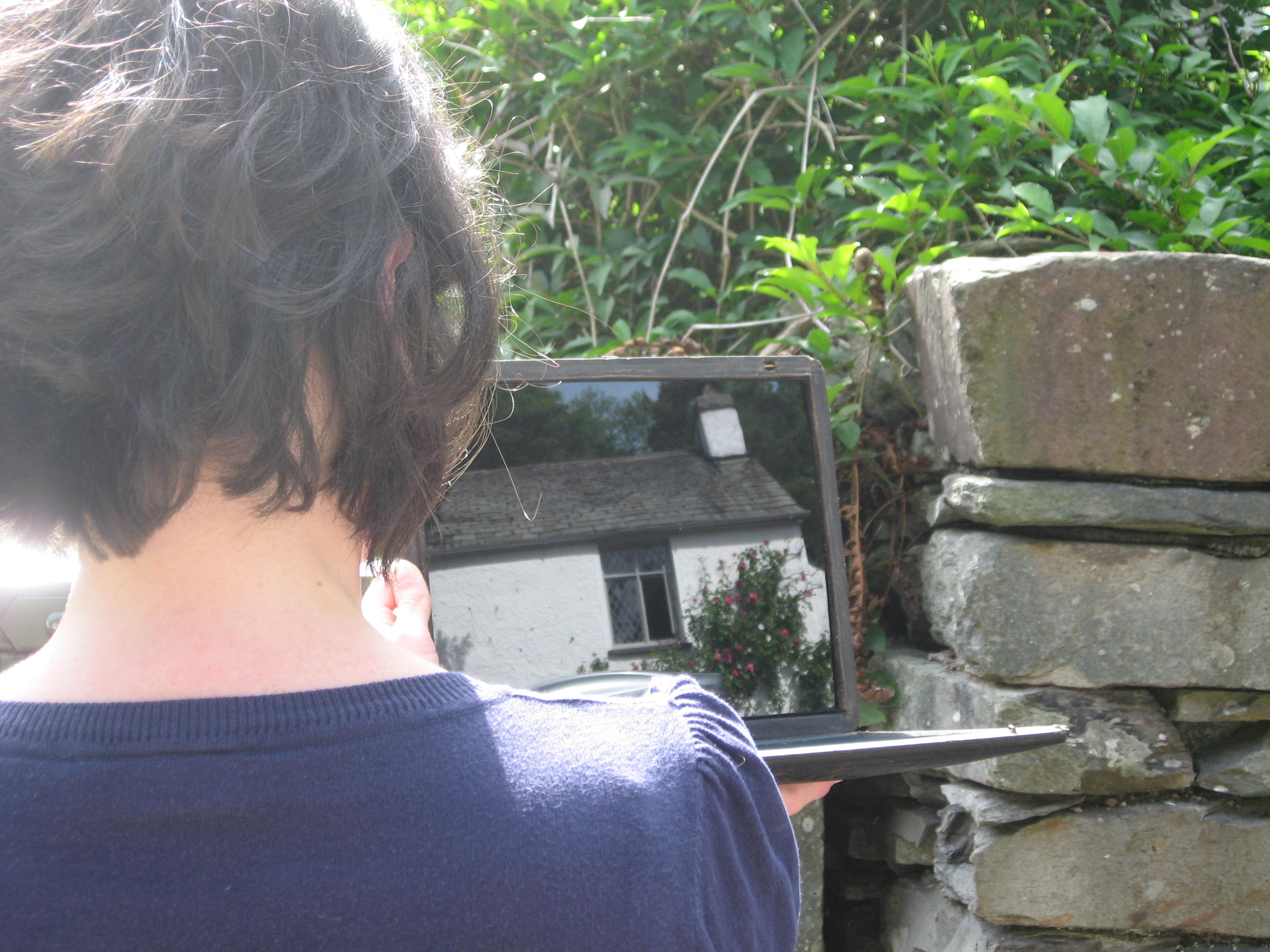Guides

With the increase in visitors to the Lake District there was also an increase in opportunity for those living within the area to profit from their presence by making use of their local knowledge and offering themselves up as guides. These men would lead visitors on treks, pony rides and boat rides around the area, ensuring that those new to the area didn’t get lost, arranging to provide them with equipment such as Claude glasses and maps and also regaling visitors with local tales and folklore.One of the instruments used by artists was the landscape mirror, a tinted convex piece of glass that provided a frame for a reflected view of the landscape. This mirror is often confused with 'Claude Glasses', which were tinted glasses through which the scene was viewed: different colours of tint could show the landscape in different seasons; for example, blue glass would give a wintry hue. The mirror in the illustration shows how it would be used, in this case the user looking at a reflection of Dove Cottage, Grasmere.
Guides would have usually attached themselves to specific inns which would have temporarily housed a captive audience likely to require the assistance such men were able to give. Thomas Hutton, who became a well-known guide around the Keswick area was attached to the Royal Arms Inn near Derwentwater Lake and in his journals his rival guide Peter Crosthwaite complained that within this establishment whereas notices advertising Hutton’s services were prominently placed, his own services were not mentioned at all.
Crosthwaite and Hutton were both well established guides within the Keswick area. Crosthwaite setting himself up as a guide whose knowledge and skill meant that he could lead his customers up difficult and obscure mountain paths, leaving the paths of Skiddaw to “lesser” guides. Hutton was well-known for his amiability and talent as a raconteur, entertaining his guests with outlandish tales of the lives and ways of the local folk. His charismatic and engaging manner resulted in his forging lifelong friendships with some of his prominent and most famous customers, such as William Wilberforce (who would later donate items to the museum Hutton founded.)
Another guide was Edward Birkett who, as well as working as a fishing tackle manufacturer supplemented his income by making use of his local knowledge and working as a guide within Keswick and the surrounding area. Like Hutton, he too provided his services to some famous and notorious customers, including John Hatfield, who was famously prosecuted and executed for impersonating a man named Colonel Hope in order to marry a local beauty Mary Robinson of Buttermere.
Landscape glass.
